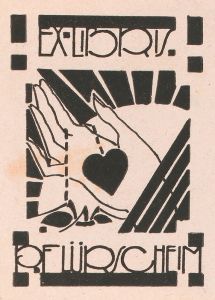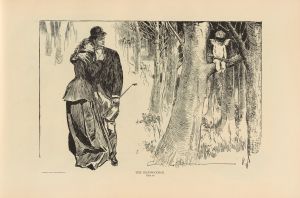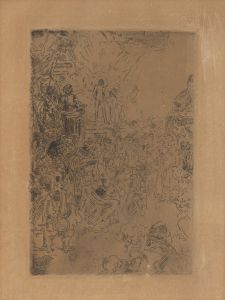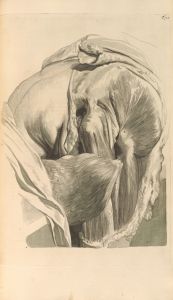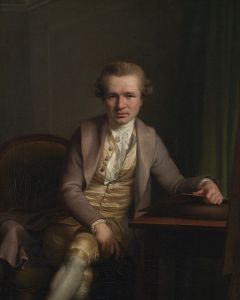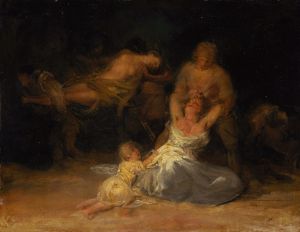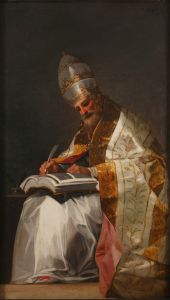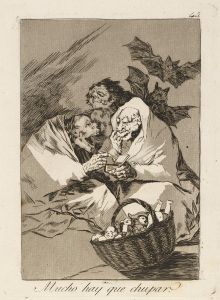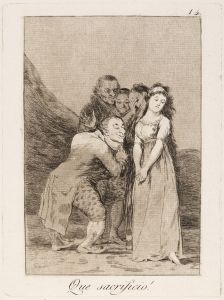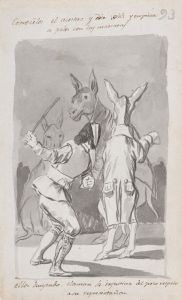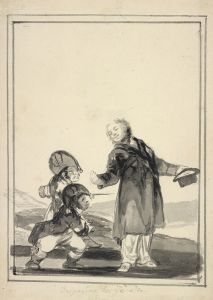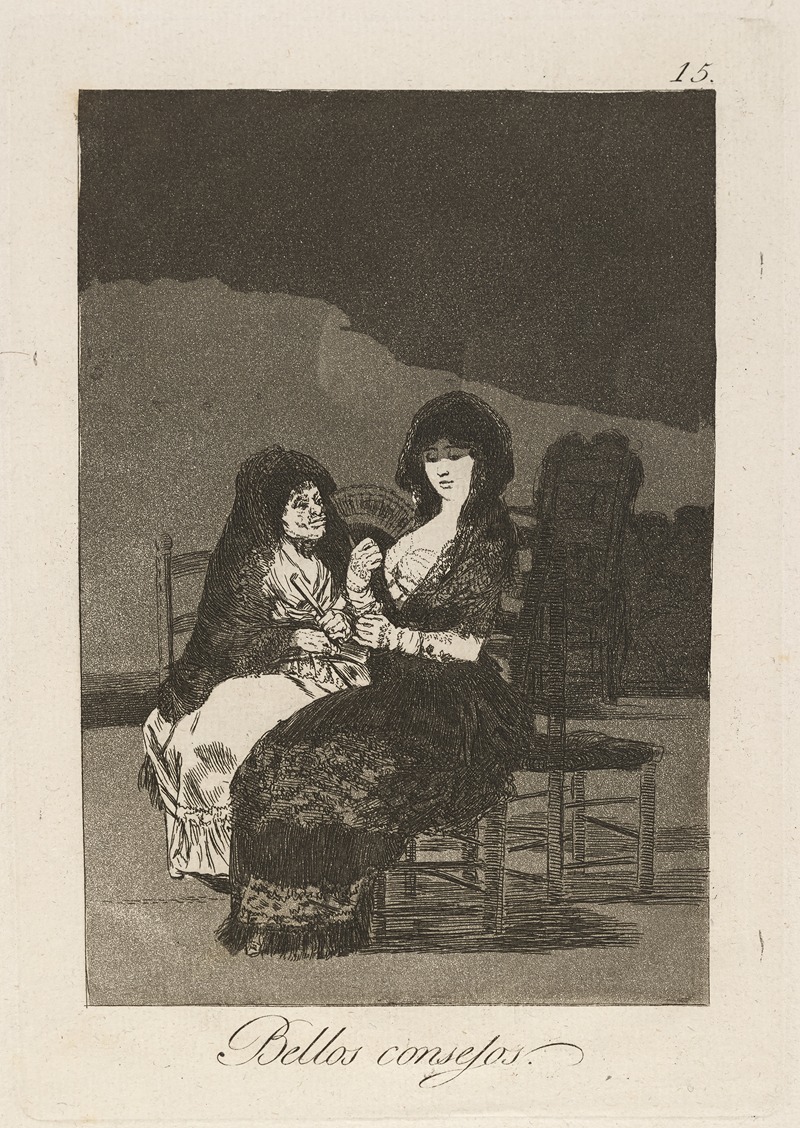
Bellos consejos.
A hand-painted replica of Francisco de Goya’s masterpiece Bellos consejos., meticulously crafted by professional artists to capture the true essence of the original. Each piece is created with museum-quality canvas and rare mineral pigments, carefully painted by experienced artists with delicate brushstrokes and rich, layered colors to perfectly recreate the texture of the original artwork. Unlike machine-printed reproductions, this hand-painted version brings the painting to life, infused with the artist’s emotions and skill in every stroke. Whether for personal collection or home decoration, it instantly elevates the artistic atmosphere of any space.
Francisco de Goya, a prominent Spanish painter and printmaker, is renowned for his profound impact on the art world during the late 18th and early 19th centuries. One of his lesser-known works is "Bellos consejos," which translates to "Beautiful Advice" in English. This piece is part of Goya's extensive series of prints known as "Los Caprichos," which consists of 80 aquatint prints created between 1797 and 1798 and published in 1799. "Los Caprichos" is celebrated for its satirical and critical examination of Spanish society, politics, and human nature.
"Bellos consejos" is the 42nd print in the "Los Caprichos" series. Like many of the works in this collection, it reflects Goya's keen observations and critiques of the social and moral issues of his time. The series as a whole is characterized by its use of dark humor and allegory to comment on the follies and vices of humanity. Goya employed a combination of etching and aquatint techniques to achieve a range of tones and textures, allowing for a nuanced depiction of his subjects.
The imagery in "Bellos consejos" is emblematic of Goya's style during this period, where he often used fantastical and grotesque figures to convey his messages. The print depicts a scene that invites interpretation, as is common with many of Goya's works. The title, "Beautiful Advice," suggests a layer of irony, as Goya frequently used titles to add a satirical edge to his visual narratives. The exact meaning of the scene in "Bellos consejos" is open to interpretation, as Goya intended for viewers to reflect on the underlying themes and messages.
Goya's "Los Caprichos" series, including "Bellos consejos," was initially met with mixed reactions. While some appreciated the innovative and bold approach to social commentary, others were unsettled by the critical portrayal of Spanish society. The series was eventually withdrawn from public sale, possibly due to pressure from the authorities or fear of reprisal, as it was seen as a critique of the powerful institutions of the time, including the Church and the aristocracy.
Despite the initial controversy, Goya's "Los Caprichos" has since been recognized as a significant contribution to the art world, showcasing his mastery of printmaking and his ability to convey complex social critiques through art. "Bellos consejos," like the other prints in the series, remains a testament to Goya's innovative spirit and his willingness to challenge societal norms through his work. Today, "Los Caprichos" is studied and admired for its artistic merit and its insightful commentary on human nature and society.





